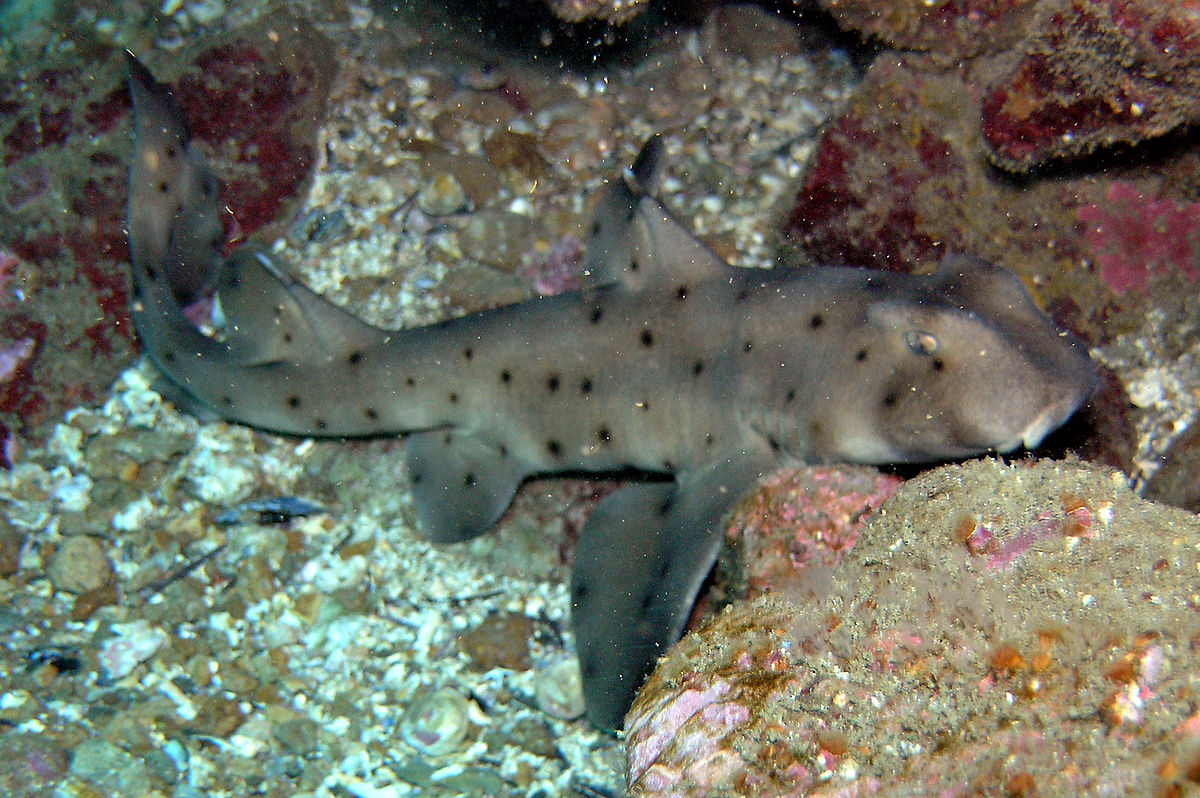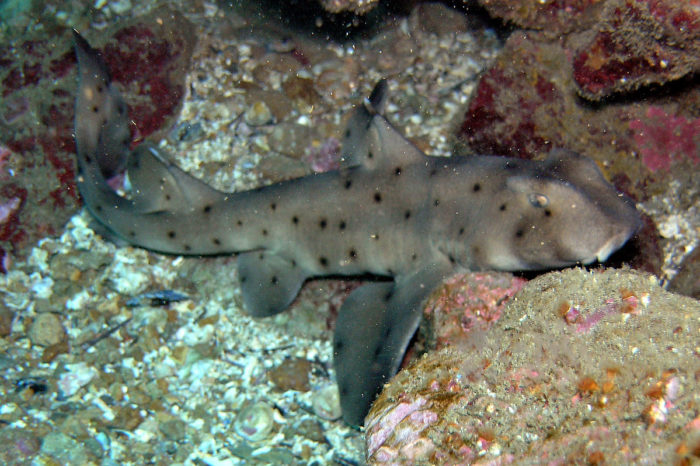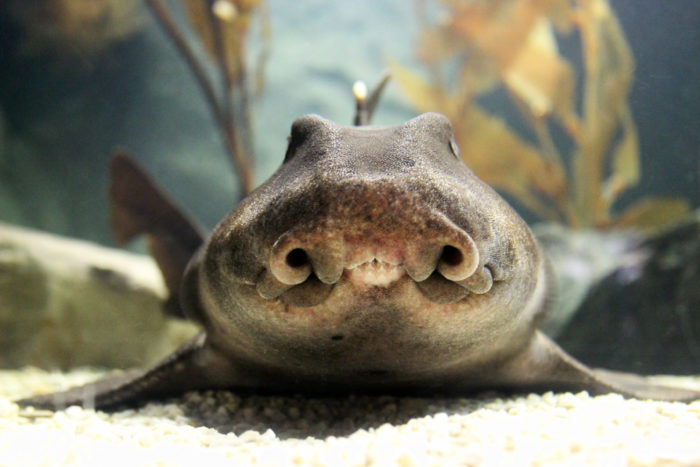
Sea Wonder: Horn Shark

Photo credit: Ed Bierman
Appropriately named for the spines in front of their two dorsal fins and ridges over their eyes, horn sharks (Heterodontus francisci), are smaller, bottom-dwelling sharks that are also known for their beautiful spiral-shaped egg cases.
DESCRIPTION
Horn sharks can grow to be nearly four feet long and weigh as much as twenty pounds when fully grown. They have short, blunt heads with a high ridge above each eye. Further down their slender bodies are two dorsal fins, each with a cartilaginous spine in front of it. Their bodies are dark to light grey or brown and covered in brown or black spots on the body and fins. Their bellies are a lighter yellow color. They have a pectoral fin on each side of their bodies, vertically positioned tail fins, and smaller pelvic fins closer to the center of their bodies, which they can use to walk along the sea floor.
Within their mouths are two kinds of teeth: the front teeth, which are pointed and help them grasp prey, and the teeth along the sides of the mouth, which are larger and wider and help them crush the hard shells or exoskeletons of their prey. Despite being small, these sharks are mighty – horn sharks have the greatest known bite force of any shark relative to its size.
DIET & HABITAT
Horn sharks are carnivorous, feeding on mollusks, echinoderms, and crustaceans, a favorite being the purple sea urchin. They are slow-moving, nocturnal predators and use their teeth to grab, trap, and crush prey they find along the sea floor.
Horn sharks live in warmer temperate and subtropical regions of the eastern Pacific Ocean with a range that spans from central California down to the Gulf of California in Mexico, including Channel Islands National Marine Sanctuary. Young horn sharks live in deeper waters offshore, slowly migrating back to shallower waters as they mature. Adults live along the sea floor, with a preference for rocky reefs that allow them to hide among kelp, caves, and crevices. Each day, horn sharks return to the same hidden site to rest while avoiding their predators, which include seals, predatory birds like eagles, and larger sharks.
LIFE HISTORY
Horn sharks are part of the bullhead shark family and can live up to 25 years, though the oldest observed horn shark is thought to have been approximately 50. Horn sharks are oviparous sharks, which means they lay eggs that hatch outside of their mother’s womb. Mature females can lay two eggs every 11 to 14 days, and eggs are protected by a stunning yet practical spiralized egg case, which the female can wedge into small cracks and crevices in the environment to hide them from potential predators. Every egg case contains one shark pup, which takes between six and nine months to hatch depending on environmental conditions and genetics. Horn sharks are generally solitary, living near other individuals but not gathering in social groups for reasons other than hunting and breeding opportunities.
THREATS & CONSERVATION
Horn sharks are not a commercially valuable species in California and are not targeted by fishing activities, though they are often accidentally caught in fishing gear like traps and trawls, both during recreational and commercial fishing activities. This species is desirable for display in aquariums due to their hardy nature, ease of care, and ability to breed regularly in human care.
We still need more information to understand how horn shark populations are changing over time, but we can assume larger-scale threats to the ocean like climate change, ocean acidification, habitat destruction, and overfishing will affect them in the future.

Photo credit: greyloch
